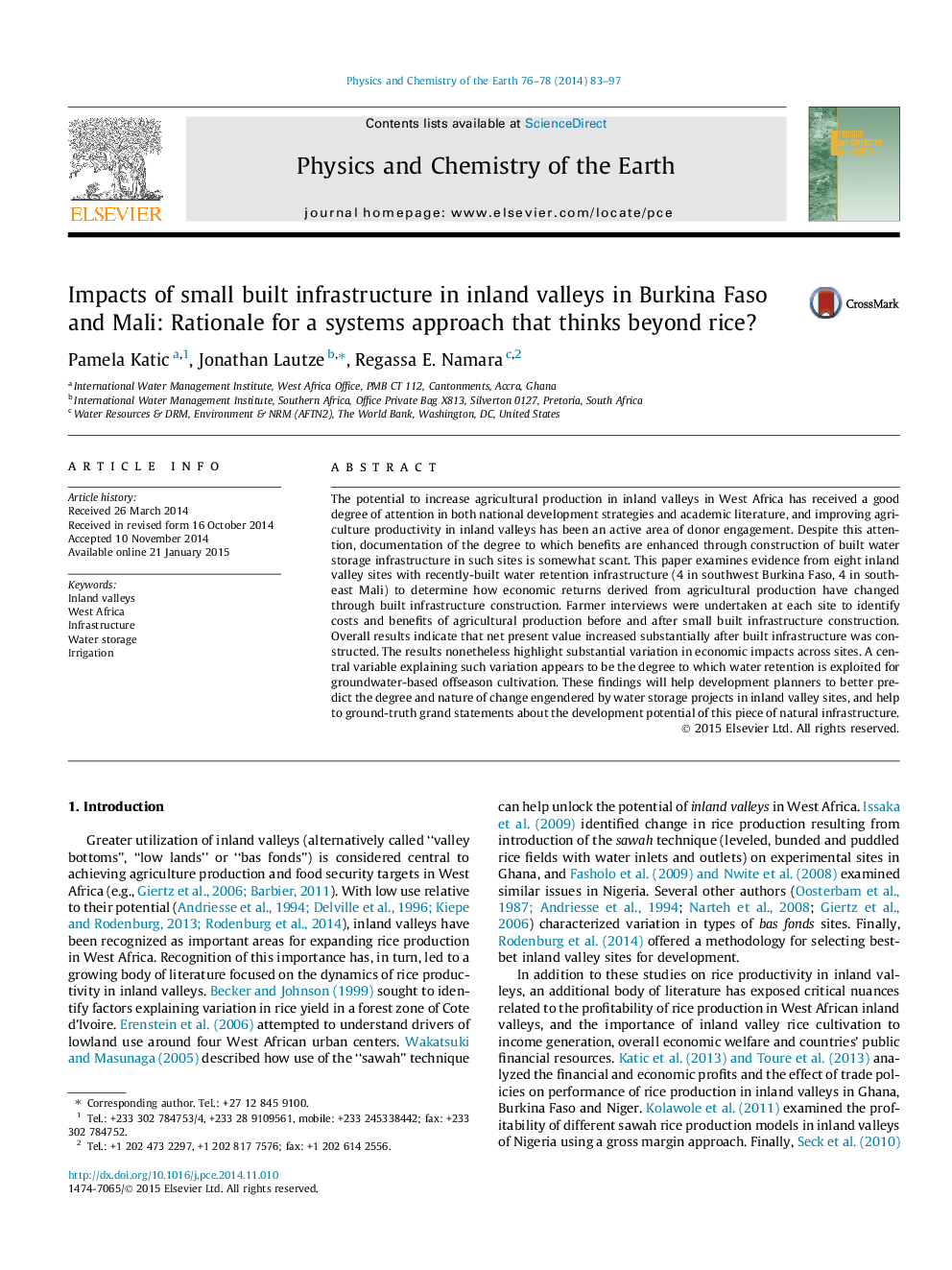| Article ID | Journal | Published Year | Pages | File Type |
|---|---|---|---|---|
| 4720965 | Physics and Chemistry of the Earth, Parts A/B/C | 2014 | 15 Pages |
The potential to increase agricultural production in inland valleys in West Africa has received a good degree of attention in both national development strategies and academic literature, and improving agriculture productivity in inland valleys has been an active area of donor engagement. Despite this attention, documentation of the degree to which benefits are enhanced through construction of built water storage infrastructure in such sites is somewhat scant. This paper examines evidence from eight inland valley sites with recently-built water retention infrastructure (4 in southwest Burkina Faso, 4 in southeast Mali) to determine how economic returns derived from agricultural production have changed through built infrastructure construction. Farmer interviews were undertaken at each site to identify costs and benefits of agricultural production before and after small built infrastructure construction. Overall results indicate that net present value increased substantially after built infrastructure was constructed. The results nonetheless highlight substantial variation in economic impacts across sites. A central variable explaining such variation appears to be the degree to which water retention is exploited for groundwater-based offseason cultivation. These findings will help development planners to better predict the degree and nature of change engendered by water storage projects in inland valley sites, and help to ground-truth grand statements about the development potential of this piece of natural infrastructure.
